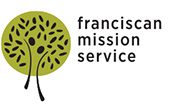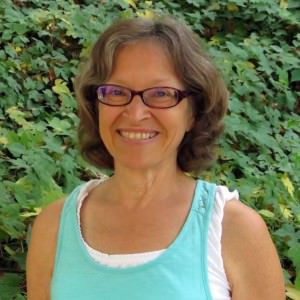My Eyes Were Opened Through Gone with the Wind

Editor’s note: Returned missioner Janice Smullen reflects on the suffering in the world and her role in following in the footsteps of Christ.
As a recently returned missioner, I am slowly “re-entering” into life in the United States, and I’m spending some of my quiet time reading Gone With the Wind. There are numerous themes to follow in this 1,000+ page novel, but the portrayal that has captured my attention is that of the fires and destruction of Sherman’s march through the South and the fear, confusion, and hatred that the survivors experienced as they tried to rebuild.
My heart and mind compare these post Civil War dilemmas with modern day horrors taking place around the world—Syria and much of the mid-East, Africa, Ukraine, South America, gun violence in the US, not to mention the violence witnessed by our missioners in Bolivia, Guatemala, and Jamaica. The horror is the same. The emotions of fear and confusion and hatred are the same. Why has this picture persisted for so long?
This isn’t just an isolated moment for me. I have thought often about the path to peace and how difficult it can be. My adolescence coincided with the peace marches of the Sixties, as we listened to songs such as “Where Have All the Flowers Gone” and “Blowin’ in the Wind,” and explored the idea of conscientious objection. Twenty years ago, I attended a play in England that focused on a time period when Catholic bishops were burning protestant Lollards. As the lighting effects portrayed flames of red, orange, and yellow, I stood under a huge crucifix suspended from the ceiling. Looking up at Jesus looking down on this scene, I pondered sadly, “When will we learn?” Twenty years after the time period of the play, it would be the Protestants burning Catholics. As I read through the burning and aftermath scenes in Gone With the Wind, I faced the realization that this destruction was promulgated by Northerners, this fact having been glossed over in my New England history classes.
My moment of clarity came, I am sure, from my prayer focus during Lent. I prayed for clarity in discerning where I can best live in service and community. God slammed me with a moment of clarity early on—not with an answer to my focus questions, but with insight into that question of “Why does a culture of violence persist throughout the world?” If I’ve been trying to model my life after Jesus Christ’s, how have I missed His total path of peace? He spent His life showing us how to care for others. He told his disciples that God will help them live this kind of life. He tells me that the Kingdom of God is Now—not as a time, but alive among us continuously.
The ideas of the Kingdom are somewhat confusing to me, and my realization seemed confusing as well, but this is what came to me: Instead of looking at Jesus on the cross and thinking “HE DIED FOR ME,” I should look at the body on that cross and think, “He is suffering. I made that suffering happen.” How does that change my perception of suffering?
I think that recognizing my own weaknesses and sins brings me to a low and empty level, but God is always available to fill in that hole and bring me higher. Anger and self-preservation block the flow of grace and love. I now see the meaning in “finding strength in the weakness of the cross,” as my Franciscan prayer book implores. If I look at Christ’s death as something orchestrated by God, and with such meaning that I could never understand, it becomes too distant and impossible to hold onto. Yet suffering is real. Everyone comprehends that. Jesus was incarnate here to show me how to live in good times and with suffering.
When I gaze at Jesus on the cross now, I see a more universal version of suffering. He did die for my sins, but I am complicit in nailing Him there. I know that His suffering is my suffering and my neighbor’s suffering. I know that His offerings of peace and healing are available to me and enable me to comfort others. It takes a very personal and very focused mind shift to cross over onto to the Way of Peace. It is not easy, but my heart knows that it is the best way.
Another passage from Gone With the Wind portrayed such a change of heart. There was a heated discussion between two women’s groups that centered on how to care for the graves of Confederates that were interspersed with the graves of Yankee soldiers who had died throughout the South. One character from Georgia expressed, “Dig up the weeds off Yankee graves? For two cents, I’d dig up all the Yankees and throw them in the dump.” As every lady “spoke her mind and no one listened,” the quiet voice of Melly spoke: “Our ‘Missing, Believed dead’ loved ones are buried somewhere in the Yankees’ country, just like the Yankee graves are here, and oh, how awful it would be if some Yankee woman said to dig them up and—….But how nice it would be to know that some good Yankee woman…pulled weeds off our men’s graves and brought flowers to them.”
Her words changed the hearts of those women present. I pray that Jesus Christ’s words and example will continue to open my heart and give me courage to live His Good News in ways that I haven’t even thought of yet.
Reflection question: How might God be calling you to a deeper commitment in building His Kingdom here on Earth?
Tagged in:

